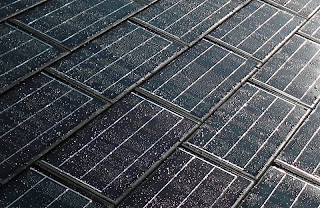Just a few months back Andrew Liveris, Chairman and CEO of the Dow Chemical Company announced the release the first consumer-grade solar shingle in 2011. Many on Wall Street speculate that the Dow Powerhouse Solar Shingles will produce revenues in excess of $5 billion dollars between now and 2015. This release, combined with earlier breakthroughs on the protective films that cover the shingles, brings the dream of sustainable energy closer to the average consumer. The reason this energy option stands out from traditional solar panels, is because Dow’s solar shingle is installed onto a roof and performs much like a typical asphalt shingle. The solar shingle not only performs the usual functions of shingling, but also greatly decreases a home’s energy costs.

According to Alternative Energy: A 2009 Report Card, solar energy has grown 1,000 percent since the turn of the century. Yahoo Finance says solar energy will grow an additional 1,500 percent globally by 2020. Andrew Liveris has stressed the importance of the relationship between the economy and the green tech industry for years: a win-win for the unemployed and the environment.

The U.S. has extended tax breaks for solar energy under the recent stimulus package. The domestic tax breaks and numerous international subsidies for solar energy put into place by many Europeans nations as well as China exemplifies that the domestic and international demand for solar energy will only increase. Even with domestic and international demand for alternative energy sources like solar energy, Executive Vice President Peribere highlights the importance of consistent support via state legislation and incentives in order for the solar market to expand. The company expresses that a lack of clarity surrounding the country’s political agenda is causing businesses and investors to stay on the sidelines. “Businesses have a lot of money they want to spend on growth. Most of that is being spent overseas — including us.” Stephanie A. Burns, Dow Corning Corp. chairwoman and CEO said an example of the “political uncertainty” is the U.S. government’s research and development R&D tax credit. The tax credit reduces federal tax liabilities, based on the amount a company spent in the development of a new product or to improve existing products “It would be great if that was permanent and we knew it was there,” Burns said. “And we knew we could rely on it and we knew the investments we do make here would have a tax benefit.”







